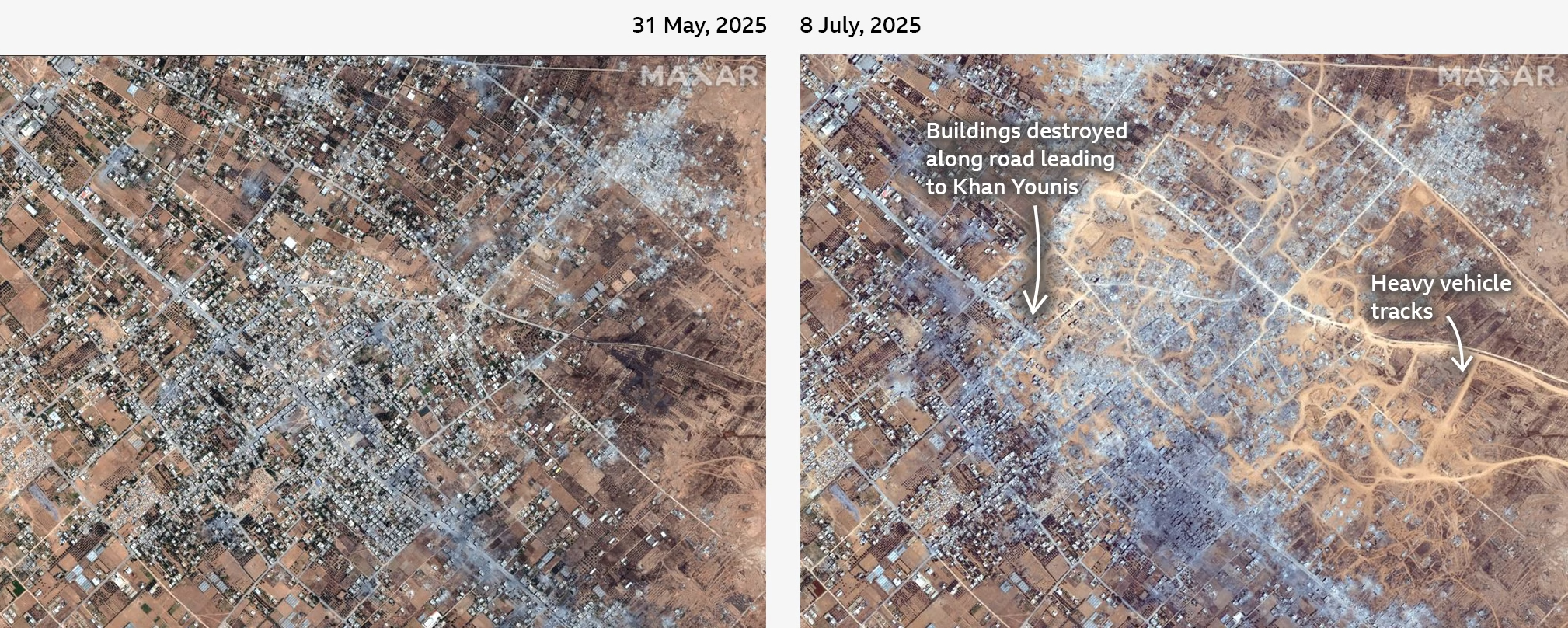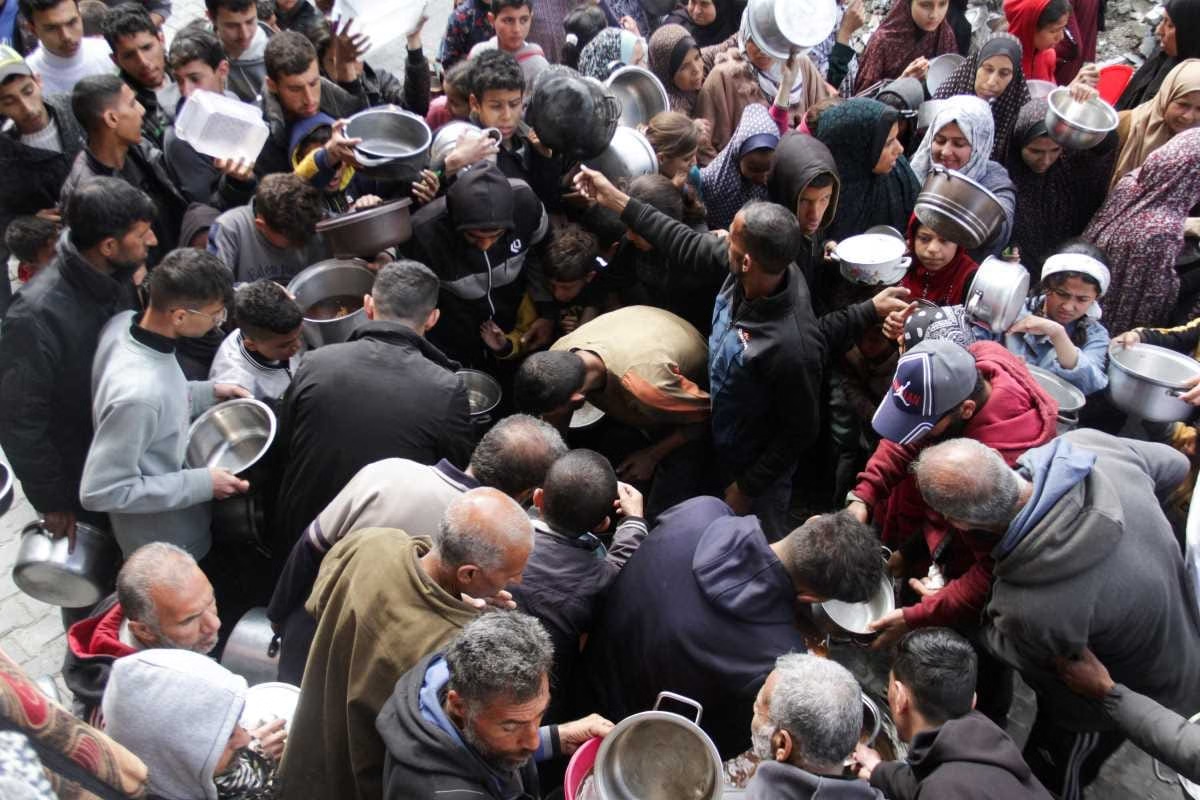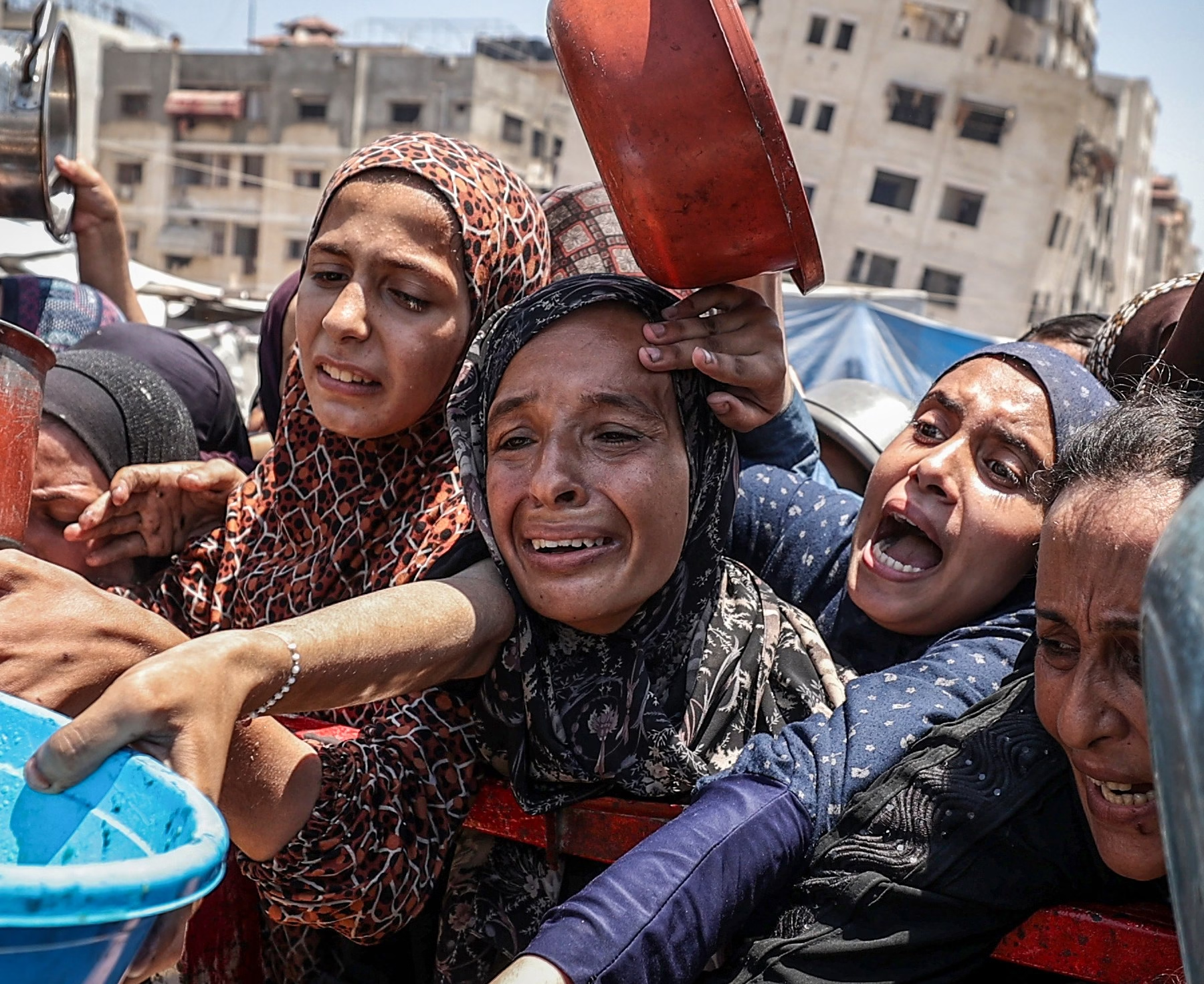Israel has destroyed once densely inhabited villages into levelled areas in Gaza since the March collapse of the ceasefire, carried out widespread demolition there. Large-scale damage shown in satellite images includes planned destruction of buildings still intact from previous attacks. Verified video reveals carefully planned demolitions lowering whole blocks including schools, skyscrapers, and civil infrastructure to rubble.
The Israeli military claims such conduct is based on “military need,” arguing that Hamas members utilize civilian areas to hide weapons and infrastructure. Still, the demolitions sometimes happen in areas distant from current war, which causes humanitarian law specialists questions. Under the Geneva Conventions, an occupying force is not allowed to destroy civilian property unless explicitly necessary for military operations. Many of the demolitions fall short of this threshold, legal analysts claim.
Thousands of structures in towns like Khuza’a and Abasan alKabira—formerly agricultural ones—have been flattened in recent weeks. May to July satellite data reveals whole neighbourhoods destroyed; some places devoid of every remaining edifice. About seven kilometers from the Israeli border, in Qizan Abu Rashwan, similar operations were described: nearly every intact structure was destroyed from mid-May.
These behaviors fit in with claimed efforts to build a “humanitarian city” above the ruins of Rafah. Israel’s military leadership has suggested moving hundreds of thousands of Palestinians to this fresh region. With detractors claiming the plan could amount to mass incarceration under the pretext of assistance, the concept has drawn strong rebuke.
Observers claim the demolitions fit a larger strategic strategy: removing “security corridors” and buffers all around Gaza. Some experts think these paths could be meant for permanent military control or to stop civilian settlement. The IDF has not given thorough explanations for the exact sites attacked.
Simultaneously, Israeli media and independent observers have reported an increase in hiring of demolition contractors via social media. Reportedly sourced from worldwide, bulldozers have been redeployed to speed up clearing operations.
Although the IDF contends that buildings present threats or could be converted by militants, humanitarian organizations argue that the scope and aim of damage create major questions. Experts caution the campaign may be a breach of international humanitarian law and possibly constitute war crimes.
Social expenses have been enormous. Once displaced several times during the war, former inhabitants now confront the erasure of their homes and all of their communities. Opportunities for comeback or reconstruction are still unknown as neighbourhoods are destroyed and infrastructure is ruined.
Without any real international accountability or humanitarian protection, Gaza’s civilian population still faces a campaign many worry seeks not just to defeat a militant group but rather to totally transform the area.






